Kappa Maki is a vegetarian sushi roll and is known for its simplicity and clean flavors. It is a popular choice in sushi restaurants in Japan and around the world, especially among those who prefer a lighter, non-seafood option. Let’s get started!
What is Kappa maki?
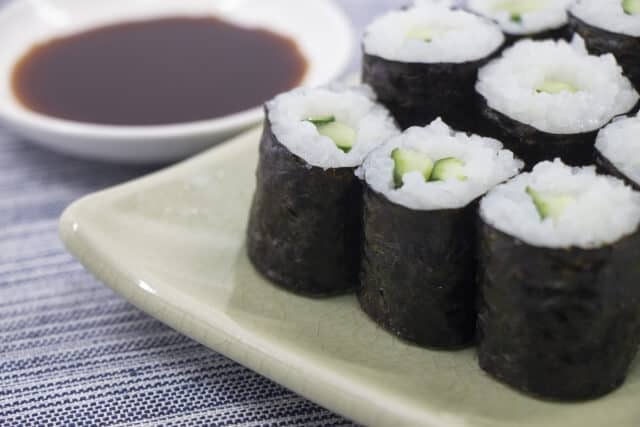
Kappa Maki, also known as “cucumber sushi roll,” is a type of hosomaki, a thin sushi roll. This delightful roll features a seaweed wrap encompassing a core of crisp cucumber, and it is a classic choice among thin sushi rolls, much like kanhyo-maki and tekka-maki. Despite its simplicity, Kappa Maki achieves a harmonious balance of flavors and textures. The name “Kappa” is thought to refer to the Japanese monster kappa, but there are various theories as to the origin of this name
Kappa maki History
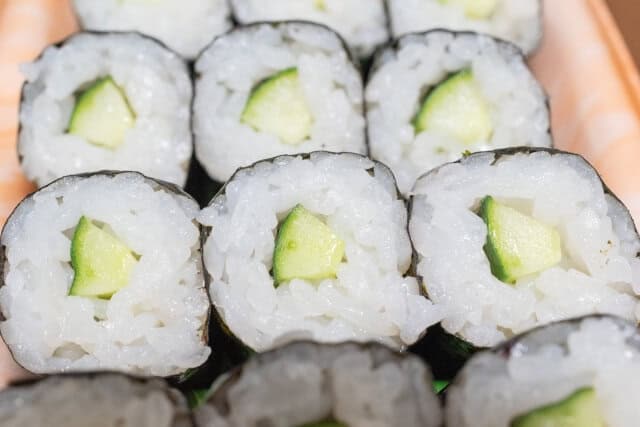
Sushi rolls, a popular dish in Japan, have an interesting history. First created during the mid-Edo period, with thick sushi rolls being common in Osaka (known as Kamigata), and thin sushi rolls becoming popular in Edo (present-day Tokyo). These thin rolls, often made with kanpyÅ, became the norm in Edo. Later, locals introduced the type of sushi roll called tekkamaki, featuring tuna as the core.
The use of cucumbers in sushi rolls have originated in the ShÅwa era (1926–1989). One theory suggests that it started at the Jingoro sushi restaurant in Osaka in 1929. The owner of Jingoro was inspired by tekkamaki and created the “original cucumber roll.” However, there are multiple claims about the invention of cucumber rolls, and it’s challenging to determine the exact origin.
Cucumber rolls, known as kappamaki, gained popularity due to their refreshing taste, crunchy texture, and affordability. They were initially considered a summer-only dish, but with advancements in cucumber cultivation, they are now available year-round. Kappamaki is known for its simple and refreshing flavor, often enjoyed after a meal of nigirizushi, and variations with other ingredients have also become popular.
Etymology
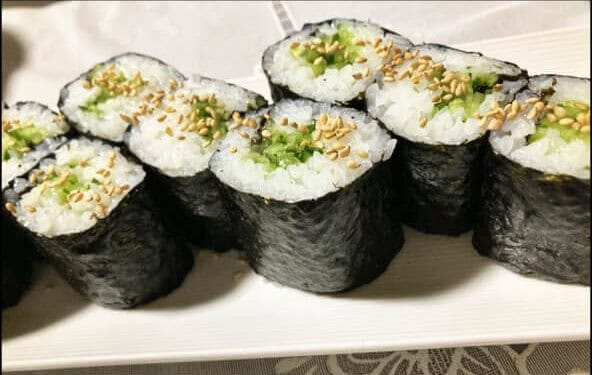
When Kappamaki was first made, it was simply called a “cucumber roll.” It’s unclear exactly when it started as Kappamaki, but they connect it to the Japanese mythical creature called the kappa. There are a few theories about why this name was chosen.
One theory is that kappas really like cucumbers, so that’s why it’s called Kappamaki. Another idea is that when you cut the end of a cucumber into round slices, it looks a bit like the plate on a kappa’s head. There’s also a connection to Gozu TennÅ, a water deity sometimes called the king of kappa. The symbol on the shrine dedicated to Gozu TennÅ is on the cucumber flower, connecting the kappa to cucumbers.
Yasui, who claimed to be the creator of Kappamaki, thought that the name might have come from a drawing of a kappa by the cartoonist Kon Shimizu, which happened to have a cucumber in it. People might have seen that picture and started calling cucumber rolls Kappamaki.
Nowadays, the word “kappa” is a symbol for sushi restaurants, indicating that they serve cucumber rolls.
What is a Kappa?

A Kappa is a Japanese water monster, often known as the water god, its yorishiro, or its temporary form. In Japanese folklore, it’s among the most well-known creatures, alongside demons and tengu.
Cucumbers for dieting
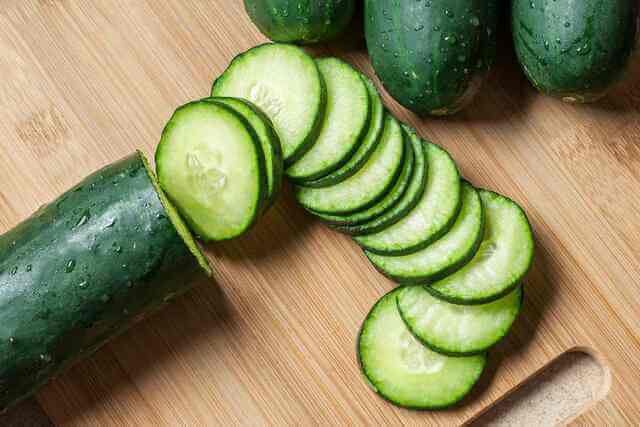
Cucumbers are an excellent choice for a diet. They’re packed with potassium, which helps remove waste and excess sodium from your body, maintaining healthy blood pressure and supporting kidney function. Additionally, cucumbers contain an enzyme called phospholipase that boosts fat metabolism, making them a great vegetable for weight loss. They can help break down and eliminate stored fat. Just remember that cucumbers have a cooling effect on the body, so don’t overindulge.
How locals create kappa maki?
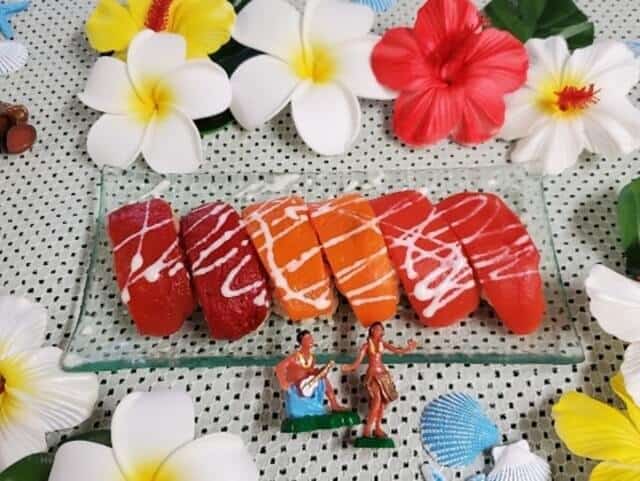
Locals create delicious sushi using traditional Edomae techniques like pickling, grilling, and kombu-jime, and we use fresh, seasonal, organic vegetables as our main ingredients. Once you’ve learned how to handle sushi rice and use a makisu (a sushi rolling mat), you can craft sushi with a variety of ingredients. On the right, there is a sweet vinegar-pickled sushi seasoned with brown rice vinegar, agave syrup, and a flavorful dashi stock. In the center, is the Saikyo-zuke technique, seasoned with organic seasonings. On the left, you’ll find a tuna pickling method seasoned with organic ingredients. To add extra flavor, you can top these sushi creations with soy milk mayonnaise, soy milk, and plum vinegar.
Kappa maki FAQ
- Is Kappamaki commonly served in Japanese sushi restaurants?
Yes, they served the Kappamaki in Japanese sushi restaurants. It is a popular and well-loved sushi roll in Japan. While it may not be as internationally famous as some other sushi varieties like California rolls or spicy tuna rolls, Kappamaki is a staple in many local and traditional sushi establishments across Japan.
- Is Kappamaki available year-round?
Kappamaki is a summer dish in Japan because cucumbers are a summer vegetable, and their light, refreshing flavor is particularly well-suited for hot weather. However, due to advances in modern agricultural practices and technology, cucumbers are now available year-round in Japan. Consequently, Kappamaki is also available throughout the year in most sushi restaurants.
Kappa maki Recipe
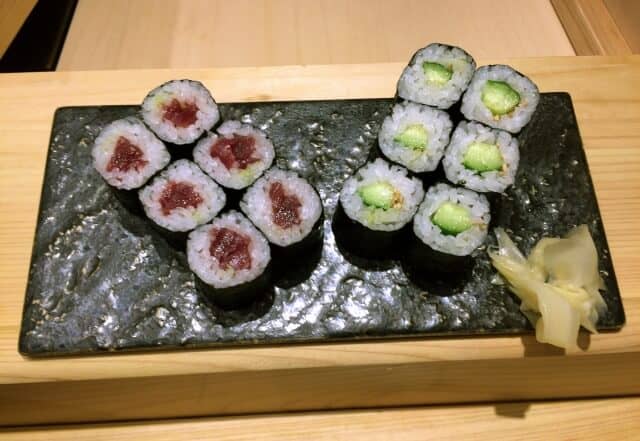
Kappa maki Ingredients
| Ingredients of Kappa maki for 3 persons | Measurements |
|---|---|
| Rice | 400g |
| Cucumber | 40g |
| Kelp | 10g |
| Vinegar | 17g |
| Sugar | 7g |
| Salt | 7g |
| Grilled seaweed | 20g |
How to make Kappa maki?
Sprinkle salt on the surface of one cucumber, rub it (salt polish), dip it in boiling water, soak in ice water, cut both ends off, cut into quarters lengthwise, and remove the seeds. Cut the other one into small pieces, put it in salted water, let it wilt, and then squeeze it tightly.
Place nori on a small roll, dampen your hands with a little vinegar and water, and spread out the sushi rice. Place the thinly sliced ​​cucumber in the center, quickly move it from one side to the other, and squeeze it tightly.
In the same way, make 2 more cucumbers with thinly sliced ​​cucumbers and 3 more with thinly chopped cucumbers. Moisten a knife with a little vinegar and water, and cut thinly sliced ​​meat into thirds, and cut small pieces into bite-sized pieces.
Where to buy Kappa maki?
Kanda Shinota Sushi (神田志乃多寿å¸)
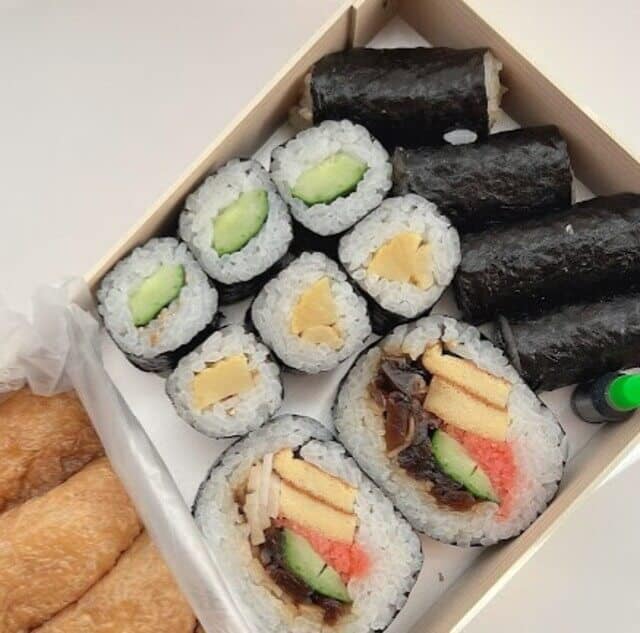
They served a variety of sushi rolls, including Kappamaki, Takuan Maki, Kanpyo Maki, and Inari Sushi. The Kappamaki remained delicious, and their daughter particularly liked the colorful Takuan Maki. The overall impression of Kappamaki at this restaurant was highly favorable, with its vinegared rice and well-seasoned ingredients receiving praise.
Yahata Sushi (八幡鮨(やã¯ãŸãšã—)
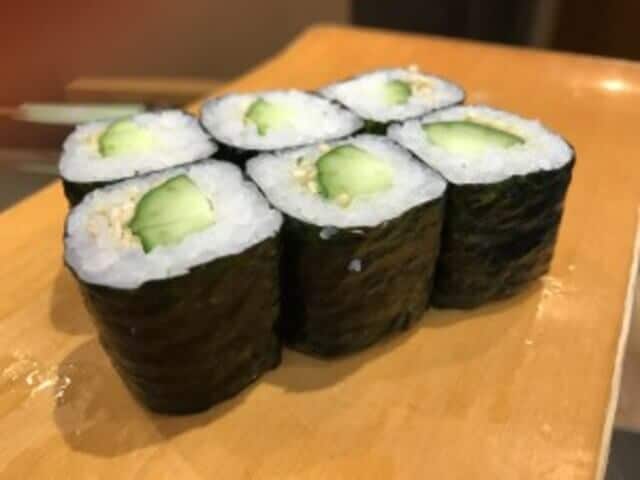
Kappamaki is synonymous with casual sushi. Many people order Nori-maki or Kappa-maki to finish off their nigiri meal. Everyone knows Kappamaki, but the fourth generation of Yahata Sushi was actually the first to roll it. At Yahata Sushi, they will continue to uphold tradition while also trying new things.
Takeaway
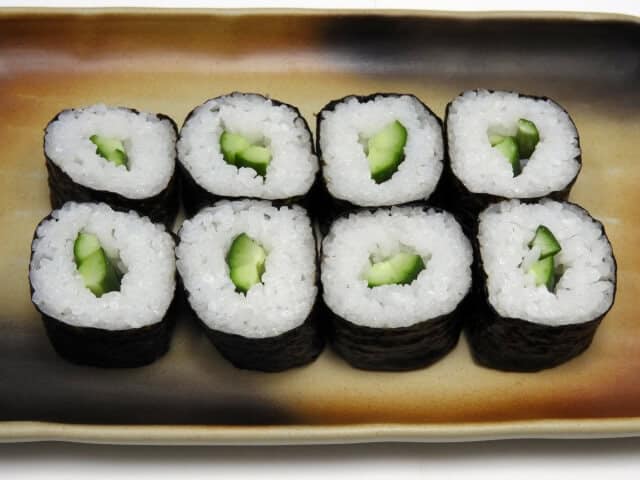
Kappa Maki is like a tasty bite of Japanese history and culture. We hope this article has given you a clearer picture of what Kappa Maki is and why it’s special. As you dive into the world of Japanese food, remember the story of this cucumber-filled delight and the mythical kappa it’s named after. With this knowledge, your next sushi adventure will be even more flavorful and fascinating.
You can check some Japanese sushi dishes that we know you would like to try too.
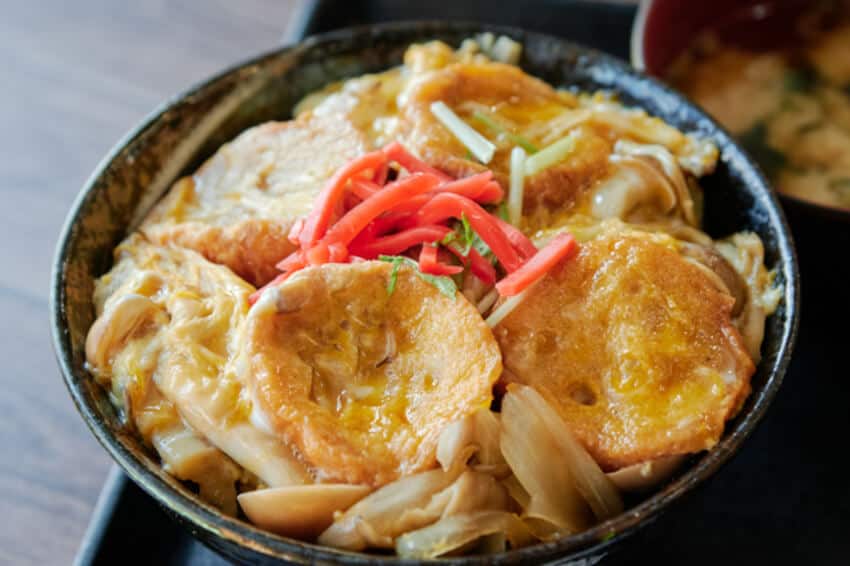
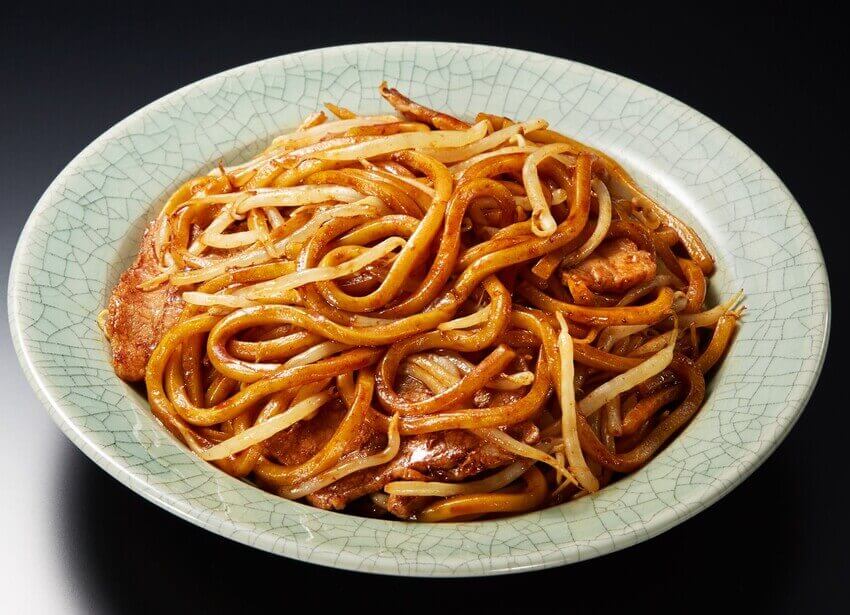




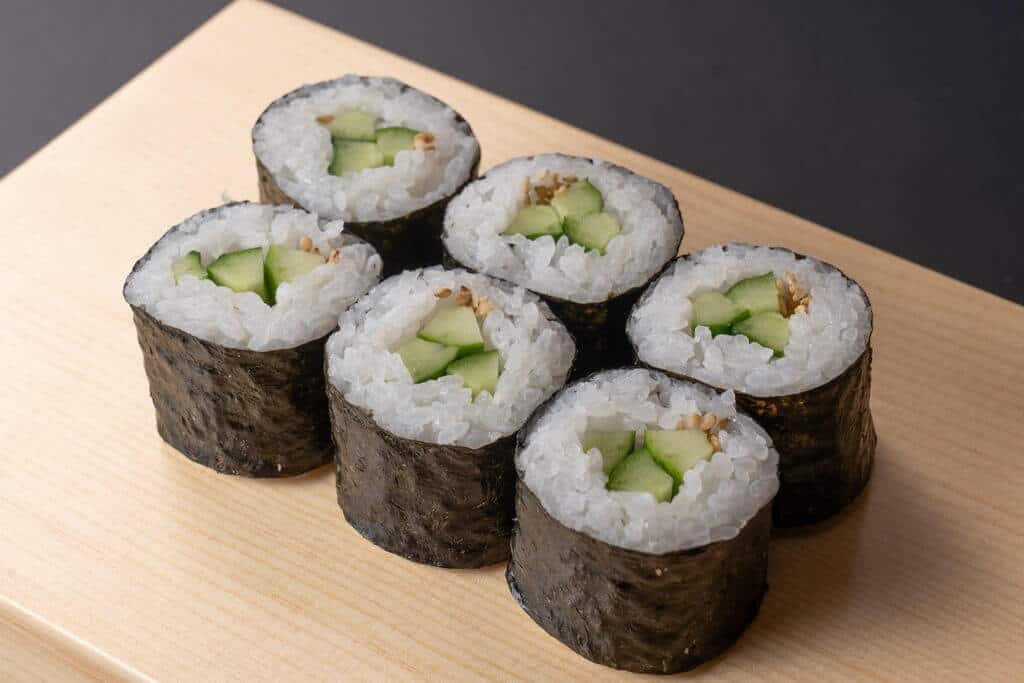
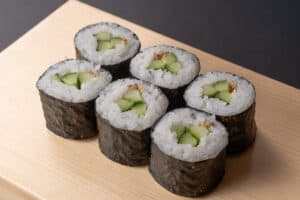


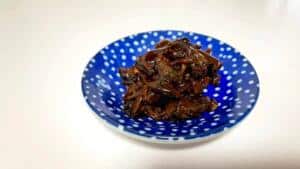


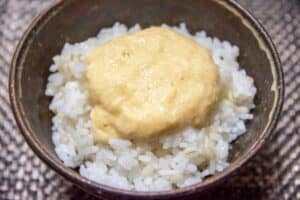

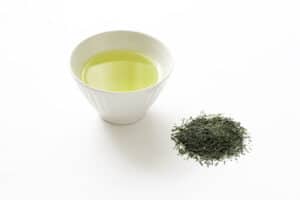
Comments
List of comments (2)
I love Kappa Maki! It’s such a refreshing and light option, perfect for warm days. Can’t wait to try making it at home after reading your post!
I never knew Kappa Maki was so simple yet delicious! Thanks for sharing the recipe and tips on rolling sushi. I can’t wait to try making it at home!